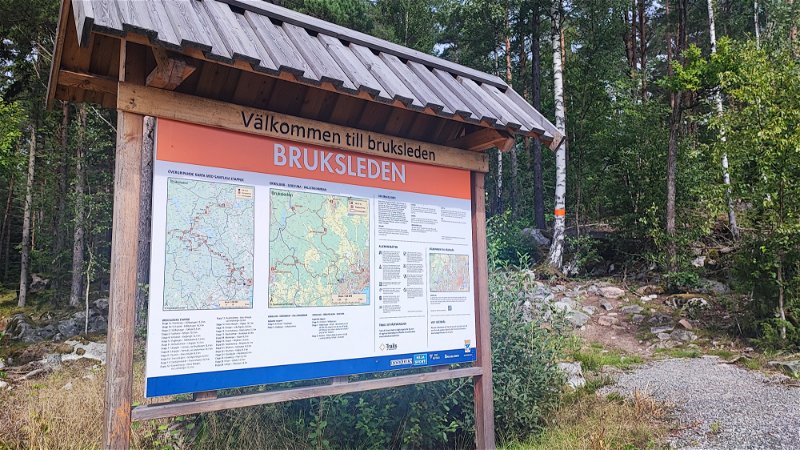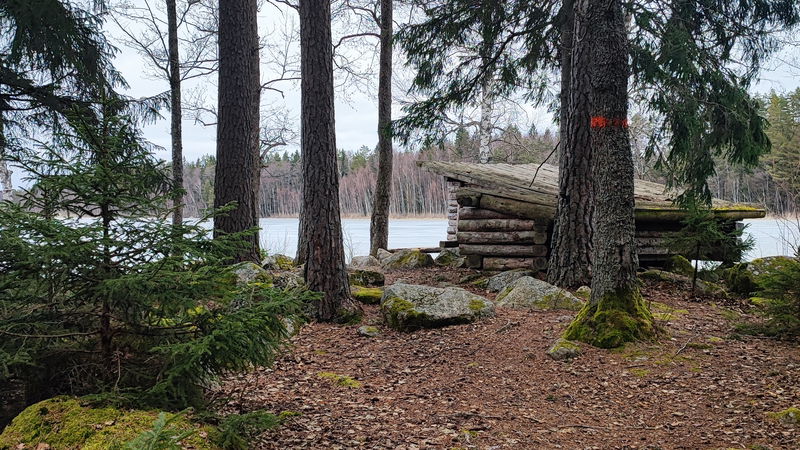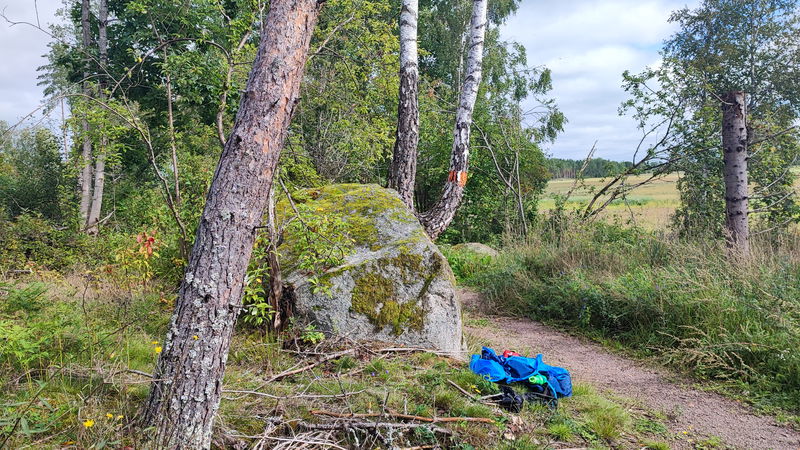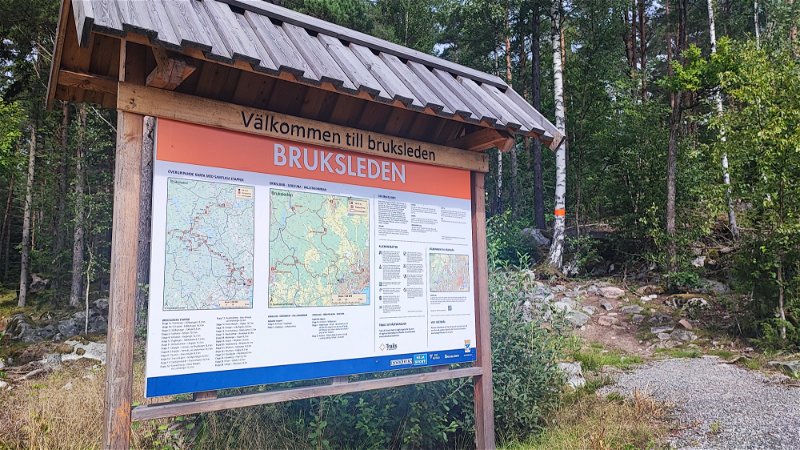Like 1a, Bruksleden's phase 1b starts from Erikslund, west of the commercial area.
The first part of the stage is rocky and hilly in places. After just under a kilometer, marked with signs, the trail goes to the right.
Now you follow a nice stretch of forest where you walk through boulder-rich terrain, over rocks and past small wetlands.
Note that the trail crosses road 66. Take care when crossing the busy road.
About 1 km after you have crossed road 66, the trail merges with stage 1a from Rocklunda.
The rest of the way to Skålbystugan you walk through coniferous forest. The nature is varied with wetlands, rocks and small meadows. At the end of the stage, Skålbystugan is located on a small hill at the edge of the forest.
RESTING PLACES
The stage destination Skålbystugan is a rest cabin with four beds. The cabin is located on a small hill on the edge of the forest. There is also a TC here.
VÄSTERÅS
In a bay on the northern shore of Lake Mälaren, the river Svartån flows. People have lived around this area for a long time. We know that there were settlements here as early as 900 years ago, but probably also much earlier. The site's advantageous location on Lake Mälaren meant that the area was already an important trading center during the Viking Age. It even became so important that it was named Westraarus. Arus comes from the Old Swedish "aros", which means estuary, and the name westra was used to distinguish the site from the absolute center of the Svea Empire, Östra Aros, now Uppsala.
The settlement was granted a city charter around 1280 and today the city at the mouth of the Svartån is called Västerås. Iron and copper products from Bergslagen have been shipped out from here since the 13th century. During the 16th and 17th century boom in iron and copper exports, Västerås became Mälaren's leading city after Stockholm. Even today, the city has one of Sweden's most important inland ports.
In 1623, King Gustav II Adolf commissioned Bishop Johannes Rudbeckius to organize the activities around the founding of Sweden's first high school in Västerås. Rudbeckius is depicted in the form of a statue by Carl Milles. The statue is placed outside Västerås Cathedral.
In the 18th century, large parts of the old buildings were destroyed by a severe fire. Therefore, the cityscape today gives a modern impression. North of the cathedral is kyrkbacken, one of the few places in Västerås where old wooden houses still stand. Here there is an irregular street network of late medieval character.
Today Västerås is a modern industrial city with a diverse engineering industry. One of the companies that emerged in Västerås during industrialism in the 19th century was ASEA, today ABB, which dominates the business community.
WHERE TO STAY AND EAT
Västerås has many different accommodation and restaurant options.
READ MORE
Directions
You can get to Erikslund by bus lines 3 and 14, the bus stop near the start of the stage is called Erikslund Västra.
About 800 m north of the stage finish at Skålbystugan there is a road, but no parking facilities.





